Oleh : Darmayenti, M.Pd.
Istilah strategi yang digunakan didalam pembelajaran bahasa kedua telah diterapkan kearah penuturan bahasa asli dengan harapan dapat bermanfaat di dalam pemebelajaran atau penggunaan bahasa kedua.....
INTRODUCTION
Reading is very important in the life of mankind. It is hard to imagine if reading activities never takes place. By means of reading, transfer of knowledge is made possible. Furthermore, the demand toward reading is getting higher as man moves from one progress to another. As a result, good comprehension about materials being read is very urgent. As a simple illustration can be seen in the field of education. Students of university, for example, are expected to be able to comprehend the texts in order to get something (knowledge) that they never had before. It is by reading of course they can get knowledge. Knowledge can be acquired if they have good comprehension. However, the phenomenon that can be seen today is most of university students, especially for the students of State Islamic Studies of Imam Bonjol Padang, still find some problems with understanding the reading text concerning with they disciplines. In other word, they seem to fail to comprehend the text. For example, they read the text and answer the question bellow of the text. They do not care the idea of the text or what the text is.
According to Twining (1991), reading comprehension fails for a number of reasons. There are five reasons for lack of reading comprehension. They are; failure to understand a word (lack of vocabularies), failure to understand the sentence, failure to understand how sentences relate to one another, failure to understand how the information fits together in a meaningful way (organization) and the last one is lack of interest or concentration.
Since reading is one of the most important academic tasks faced by students, they have to establish strategies which can improve their reading comprehension. Strategies designed to improve reading comprehension may have any number of purposes, such as to enhance understanding of the content information presented in a text, to improve understanding of the organization of information in a text, to improve attention and concentration while reading and to make reading as more active process, to increase personal involvement in reading material, to promote critical thinking and evaluation of reading material and to enhance registration and recall of text information in memory.
In addition, improved reading comprehension skills can positively impact many facets of students’ academic performance. Students who have effectively read and understood reading assignments are better prepared for class, leading to improve class participation and more accurate and complete notes. Performance on exams and quizzes may be greatly improved, as students become more proficient and effective readers. The students’ interest and motivation in a subject is fostered when one understands the reading assignment. In addition, as students gain proficiency in reading, self esteem improve.
Dealing with the problems of reading comprehension, through this paper the writer will try to give the solution to overcome the students’ problem. In this case, the writer promotes the strategies in reading comprehension that is cognitive strategies through highlighting, note taking and summarizing.
NATURE OF READING COMPREHENSION
Whatever we read, of course, there are some purposes to achieve. Wallace (in Mudahar’s 1995:15) states that the reading purposes are reading for survival, reading for pleasure, reading for learning and reading for pleasure. In order to get the purposes, we should understand and comprehend the meaning and message conveyed in the passage. In addition, Devine (1986:67) also states that reading comprehension is a process of activating knowledge of the world, appropriate cognitive skills and reasoning ability to get idea from the print. In addition, reading comprehension is the capability to recognize the information and it is often referred to a complex cognitive.
Harris (1965:8) also states that reading is a meaningful interpretation or written verbal symbols and a result of the interpretation between the perception of graphic symbol that represent language and the reader’s language skills and knowledge of the world.
Furthermore, reading cannot be separated from humans’ life. It is unimaginable if man does not read anything in his life. The need of reading not for the sake of the fulfillment of intellectual demand only, but also physiological one. In line with this, Darrow in Carnine ( 1990:3) points out that reading is one of man’s ingredients for blending his inner psychological world with the other social world and emerging into a new world of thought, imagination, and reality. It becomes an avenue for growth the degree to which it stimulates both intellectual and emotional aspects of personal and group living. Kustaryo (1988) adds that reading is also combination of words, recognition, and intellect and emotional that interrelated with prior knowledge to understand the message communicated.
According to Carnine (1990:3) in addition the idea above, reading is a complex process. Furthermore, Markseful (1966:12) stresses that reading may be defined as a complex purposeful, thinking process engaged in by entire organism while acquiring knowledge, involving new ideas, solving problem or relaxing and recuperating through the interpretation of printed symbols. In line with Markshefell, Caroll (1964) says that reading is a process of thinking, evaluating, judging, imagining, reasoning and problem solving.
Based on the above quotations it can be understood that reading is more than grasping the printed symbols. It is a complex process which does not require the reader’s knowledge about the language but also background knowledge of the meaning which is intended by he writer.
Dealing with comprehending text in foreign language, Widdowson in Mickulecky (1989) says that reading does not involve the simple decoding of the printed word, but the reader in his interaction with the text creates the meaning. It means that during reading process, the reader constructs the meaning of the text through an interaction between their background knowledge and what is actually present in the text. Havriliak and Dougherty (1985) strengthens that comprehending involves the use of arrangement of information of known.
Based on the ideas above, it can be understood that reading comprehension is not easy for the readers. It involves the understanding of vocabulary, saying the relationship among the words and concept, organizing ideas, recognizing the author’s purposes, making judgment and evaluating.
Dealing with lack of reading comprehension, Muskingum College Center for Advancement of Learning (2002) provides the following tips which are intended to help students and facilitators identify reasons for lack of reading comprehension. Learners may find that reasons for lack of understanding are situational, depending on the type of the reading matter, the subject of the material, and one’s mental or physical state. Not all failures in all contexts will be attribute to the same factor. For example, lack of understanding biology text may be due to vocabulary problems, while lack of comprehension of a history text may be attributed to organizational failures. Therefore, it is helpful for the students to be familiar with a number of reading comprehension strategies in order to deal effectively with different situations. The tips are (1) read a variety material. Do not limit yourself to the text books, (2) read fairly long portion of the material. It would be difficult to assess reading comprehension based on one or two paragraphs. Try to read an entire section or chapter instead, (3) circle unknown or unfamiliar words as you read, (4) after reading, recall as much of information as possible. Then check the accuracy and completeness of your recollections. If the main ideas are presented in a particular order, see if you can recall that organization, (5) consider how interesting the subject matter is and how much you already know about he subject, and (6) answer the questions about the materials after reading it. The question may come from the book itself, from the instructors or tutors, or may be made up by the students.
Related to these concepts, this paper will try to overcome their problem that is through a strategy. One of the strategies that can be used is cognitive strategy which is classified into three strategies. They are note-taking, summarizing, and highlighting.
LANGUAGE LEARNING STRATEGIES
1. Nature of Learning and Language Learning Strategy
According to Wenden and Rubin (1987:19) learning strategy is “any set of operations, steps, plans, routines used by the leaner to facilitate the obtaining, storage, retrieval and use of information”. She also adds that learning strategies are which contribute to the development of the language system which the leaner constructs and affect learning directly. Richards and Platt (1992:209) state that learning strategies are “intentional behavior and thoughts used by the learners during learning so as to better help them understand, learn, or remember new information’. In addition, Faerch Claus and Casper (1983:67) stress that a learning strategy is “an attempt to develop linguistic and Sociolinguistic competence in the target language”. Stern (1992:261) points out that the concept of learning strategy depends on the assumption that learners consciously engage activities to achieve certain goals and learning strategies can be regarded as broadly conceived intentional directions and learning techniques.
Based on the quotation above it can be understood that all language learners use language learning strategies either consciously or unconsciously when processing new information and performing tasks in the language classroom. Since language classroom is like a problem-solving environment in which language learners are likely to face new input and difficult task given by the instructors, learners attempt to find the quickest or easiest way to do what is required, that is, using language learning strategies is inescapable.
In addition, Language learning strategies are the language that the learners use during the act of processing the new information and performing tasks have been identified and described by researchers. Brown and Paliscar (1982) classified general learning strategies as meta-cognitive or cognitive, and this distinction is also useful in classifying the strategies used by the second language learners. Brown and Paliscar (1982) state that meta- cognitive strategies involve thinking about the learning process, planning for learning, monitoring of learning while it is place, self-evaluation of learning after the learning activity. While cognitive strategies involve manipulation or transformation of the material to be learned.
Robecca (1990) also states that Language learning strategies that directly involve the target language which are called direct strategies. Direct strategies require mental processing of the language. There are three categories of the direct strategies. Namely; memory, cognitive and compensation strategies. These strategies are applied in different purposes.
Memory strategies, such as grouping or using imagery which helping students store and retrieve new information. In addition, It can help language learners to cope with this difficulty. Cognitive strategies, such as summarizing or reasoning deductively, enable learners to understand and produce new language by many different means. Compensation strategies are allowing learners to use the language the language despite their often large gaps in knowledge. In order to make it clear, it is the diagram of language learning strategies which related to direct strategies.
2. Types of Language Learning Strategies
Actually, there are two types of language learning strategies ( Robecca: 1990). They are Direct Strategy and Indirect strategy. Direct strategy is that directly involve the target language in language learning. There are three groups of direct strategies. They are:
Memory Strategy Creating Mental Image
Applying images and sound
Reviewing well
Employing action
Cognitive Strategy Receiving and sending message
Applying and reasoning
Creating structure for Input and
output
Compensation Strategy Guessing Intelligently
Overcoming limitation in
speaking and writing
While indirect strategy involves Meta cognitive strategy, Affective and social strategy. All these strategies can be applied for all language skills such as reading, speaking, writing, listening and other aspect of the language. However, this paper just focuses on cognitive strategy on reading comprehension.
COGNITIVE STRATEGY
As stated above, that one language learning strategies is Cognitive strategy that is essential in learning a new language. Such strategies are varied lot, ranging from repeating to analyzing expressions to summarizing. With all their variety, cognitive strategies are unified by a common function: manipulation or transformation of the target language by the leaner. Cognitive strategies are typically found to be the most popular strategies with the language learner. According to Robecca (1990), that cognitive strategy divides into four all sets. They are Practicing, Receiving and sending message, and analyzing and reasoning and creating structure for input and output. The first letters of each of these strategy sets combine to form the acronym PRAC because cognitive strategy is PRACtical for language learning.
• Practicing
There are five strategies on practicing strategy namely;
a. Repeating
This strategy is a kind saying or doing something over and over, listening to something several times, Rehearsing, imitating a native speaker.
b. Formally Practicing with Sounds and Writing Systems
Practicing strategy is like practicing sounds (intonation, pronunciation, etc,) in a variety of ways, but not yet in naturalistic communicative practice or practicing the new system of the target language.
c. Recombining
It is a kind of combining elements in new ways to produce a longer sequence, as in linking one phrase with another in a whole sentence.
d. Recognizing and using Formulas and Patterns
It is a kind of a strategy is being aware of and / or using routine formulas.
e. Practicing Naturalistically
Practicing the new language in natural, realistic setting, as in participating in a
Conversation, reading a book or article, listening to the lecture, or writing a letter in a new language.
• Receiving
a. Getting the Idea quickly
In this case skimming to determine the main ideas or scanning to find a specific detail of interest. This strategy will help learners understand rapidly what they hear or read in a new language. Preview question often assists.
b. Using Resources for Receiving and Sending Message
Using print or no print to understand incoming messages or produce outgoing messages.
• Analyzing and Reasoning
It is used to understand the meaning of a new expression r to create a new expression
a. Reasoning Deductively
b. Analyzing Expression
c. Analyzing contrastively
d. Translating
e. Transferring
• Creating Structure for Input and Output
It is necessary for both comprehension and production in the new language. There are three strategies can be applied here, namely;
a. Taking Notes
Writing down the main idea or specific points. It involves raw notes
b. Summarizing
Making a summary of a longer passage
c. Highlighting
Using a variety of emphasis techniques (underlining, starring, or color –coding) to focus on important information in a passage.
However, the writer just focuses on creating Structure for Input and Output. In addition, it brings benefits to language learners.
APPLYING COGNITIVE STRATEGY IN READING COMPREHENSION THROUGH NOTE TAKING, AND SEMANTIC MAPPING
Creating Structure for Input and Output is one of types of Cognitive Strategy. There are three strategies in this group – taking notes, summarizing, and highlighting- help learners sort and organize the target language information that comes their ways. In addition, these strategies allow students to demonstrate their understanding tangibly and prepare for using the language for speaking, reading, listening or writing. However, in this article, the writer just focuses on Note taking and Semantic Mapping since that these strategies will be useful for the students in learning process for every meeting.
• Applying Cognitive Strategy in Reading Comprehension through Note -Taking.
Robbeca (1990) states that taking note is very important strategy for reading. The focus of this strategy should be on understanding. Note taking is often thought of as an advanced tool, to be used at high levels of proficiency such as when the students are listening to the lecturers. Key points can be written in the learners’ own language first. Depending on the purpose, note taking can be in the target language or a mixture of the target language and the learners’ own language with known vocabulary words written in the target language and the rest in native language.
Steps of Note-taking in reading comprehension
There are many different ways to take-notes which are unstructured and untransformed. For raw notes to become useful Learners need to:
1. go back immediately
2. Organize the notes using a different system
3. Use the shopping list or T- formation, semantic map, and tree diagram
4. use graphic and visual to highlight main ideas
The advantage of using of these formats initially is that they help learners organize what they hear while they are hearing it, thus increasing the original understanding and the ability to integrate new information with old.
The T- formation is used for shopping list in order to allow learners use the space on the paper in a more effective way. The students can apply these steps:
1. Draw a T in a piece of paper
2. Take up the whole sheets
3. Write the main theme or title on the top line ( the crossbar of the T)
4. Write the basic categories or topic that have been discussed: on the right of vertical line
5. Write details, specific examples, follow-up questions or comments
Example of T- formation
Lemon tea
Milk
Sugar
Ingredients bananas
Needed vanilla
;
;
; Equipment large bowl
Needed measuring cup
Fork
Spoon
Other format of note –taking is semantic map. It is requiring learners to indicate the main word or idea to link this with clusters of related words or ideas by means of lines or arrows.
• Applying Cognitive Strategy in Reading Comprehension
through Semantic Mapping
The nature of semantic mapping is derived from the idea of Mohammaad Zaid ( in Antonaccy,1991;174). Even though this term had well be known for several years ago but this strategy can be applied until now for any level of students in reading comprehension. In this case, the writer wants to apply this strategy in order to help students’ problem in reading comprehension at English department of art and literature faculty of State Islamic Studies of Imam Bonjol Padang.
Concept of Semantic mapping is a visual representation of knowledge and a picture of conceptual relationship (Mohammad Zaid in Antonaccy, 1991; 174). Other ideas of semantic mapping is also stated by Sinatra, Stahl-Gemake, and Berg ( 1984:22) that is a graphic arrangement showing the major ideas and relationship in the text among word meaning. So, semantic mapping is one learning strategies in reading comprehension. In addition, Zaid said that semantic mapping is beneficial learning strategy for all grade levels and can manifest considerable improvement in reading comprehension, written expression, and vocabulary development. This strategy is interactive activities between students and content of reading passages applied in map drafting by schema form. These are the steps can be applied: understanding the topic, brainstorming, categorization, personalizing the map and synthesis.
Based on explanation above, it can be concluded that semantic mapping can improve reading skill of the students. There are some benefits of semantic mapping the students in learning a second language:
1. Semantic mapping is interactive because in drafting the map, students work with each other both and after the targeted language topic. Its creation entails total students involvement: the students are active in developing map.
2. Semantic mapping allows for sequent ional negotiation. It means that there is interpersonal negotiation through students’ suggestion and categorization. Then there is reflective interpersonal negotiation while each student is reading about the topic.
3. Semantic map is an information-gap activity. It means that the students must fill in gaps in the map and their interpersonal schemata of the topic as the map takes shape.
4. Semantic map is predictive activity. It means that in pre-reading phase the students’ discussion basically anticipates what will appear in the reading material. Being allowed to make brainstorming and categorizing prediction about the reading.
5. Semantic mapping is student centered. It means that semantic mapping makes use of the students’ prior knowledge and control input at each stage of the map’s building.
6. Semantic mapping is an integrative activity. It means that it allows the students to connect previous knowledge with new knowledge.
Procedures of Semantic Mapping in Reading Comprehension
These are the procedure that the students can be applied in reading comprehension:
1. Understanding of the Topic
Understanding of the topic is an activity done by the students before they read the text. The students draw a large oval on the paper and write inside the topic about. For example, they are reading about pollution. They write inside the circle with the word pollution.
2. Brainstorming
In this activity the students try to think of the ideas that might relate to the topic by using short questions in their main. For instance, they think of types of pollution, the meaning of pollution and so on. Brainstorming means that is an application of the schema theory which attempts to explain how people integrate new information with their existing framework of knowledge. In order to make it clear about information that they express, it is suggested to use different color of pen.
3. Categorization
It is time to connect the ideas to the levels of the ideas, categories ideas, exemplifying, and detail ideas by using circles, squares or rectangles and straight lines in the schema map. Here, the students need some vocabularies.
4. Personalizing the map
It is the major activity. Here the students start to read the text. Through reading, they will decide to add or to eliminate from the information that they have written in pre-reading activity. The students try to include all information from the text.
5. Post Assignment activity
In this activity, the students draw their ideas of both prior knowledge and new information with different color in the map. This is an example of semantic mapping under the topic “Pollution”
So. This strategy can be created as follow steps;
a. Pre Activity
The students should understand the topic of reading firstly. In this case, they try to give their brainstorming of the topic as far as they can. They include all information related to the topic
b. Whilst activity
The students read the text. Then, they add any information that they get from the text. They draw circles or rectangles and put information in it. They can discus with their friends.
c. Post activity
Then, the students complete the information through drawing the map and input the information in it.
CONCLUSION
There are many language learning strategies that can be applied in learning a second language. One of them is cognitive strategy where this is essential in learning a new language. Cognitive strategies involve manipulation or transformation of the material to be learned. In order to improve the students’ reading comprehension, two of cognitive strategy can be applied. They are Note taking and semantic mapping.
Since reading is one of the most important academic tasks faced by students, they have to establish strategies which can improve their reading comprehension. Strategies designed to improve reading comprehension may have any number of purposes, such as to enhance understanding of the content information presented in a text, to improve understanding of the organization of information in a text, to improve attention and concentration while reading and to make reading as more active process, to increase personal involvement in reading material, to promote critical thinking and evaluation of reading material and to enhance registration and recall of text information in memory.
In addition, improved reading comprehension skills can positively impact many facets of students’ academic performance. Students who have effectively read and understood reading assignments are better prepared for class, leading to improve class participation and more accurate and complete notes. Performance on exams and quizzes may be greatly improved, as students become more proficient and effective readers. The students’ interest and motivation in a subject is fostered when one understands the reading assignment. In addition, as students gain proficiency in reading, self esteem improve.
Kamis, 22 Januari 2009
Semantic Mapping and Note Taking
Langganan:
Posting Komentar (Atom)

























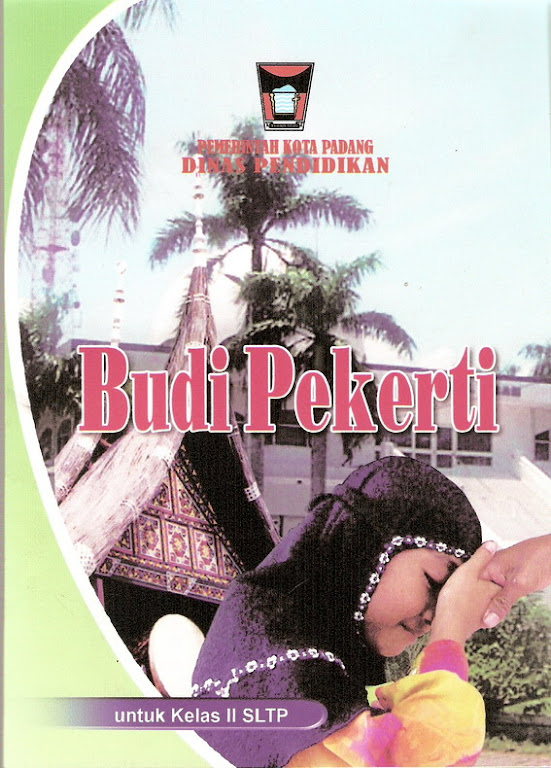



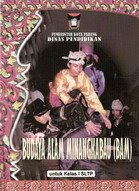

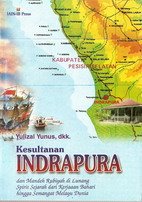



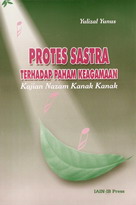
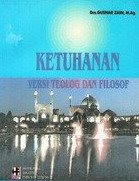




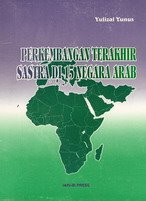











Tidak ada komentar:
Posting Komentar